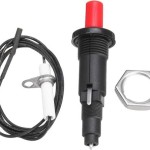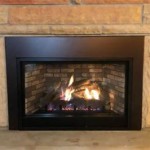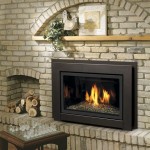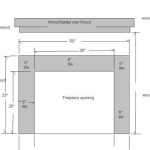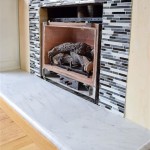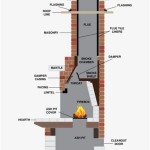```html
Direct Vent Fireplaces: A Comprehensive Guide
Direct vent fireplaces represent a significant advancement in fireplace technology, offering a blend of efficiency, safety, and aesthetic appeal. These fireplaces differ substantially from traditional wood-burning fireplaces and even other gas fireplace types, primarily in their venting system and combustion process. Understanding the mechanics and benefits of direct vent fireplaces is crucial for homeowners considering upgrading their heating systems or adding a focal point to their living spaces.
A direct vent fireplace is a sealed combustion appliance, meaning it draws combustion air from outside the home and vents exhaust gases directly outdoors. This sealed system prevents the fireplace from using indoor air for combustion, thereby reducing drafts and improving energy efficiency. The venting system itself consists of two concentric pipes, one inside the other. The outer pipe draws fresh air into the fireplace, while the inner pipe expels exhaust gases. This coaxial design ensures that no combustion byproducts enter the living space.
The popularity of direct vent fireplaces stems from their versatility and ease of installation. They can be installed in a wide range of locations within a home, including rooms without existing chimneys. The venting system can be run horizontally through an exterior wall or vertically through the roof, providing flexibility in placement. This adaptability makes them an attractive option for both new construction and remodeling projects.
Key Advantages of Direct Vent Fireplaces
Direct vent fireplaces offer numerous advantages over traditional fireplaces and other heating systems. These benefits contribute to their increasing adoption in residential and commercial settings.
Enhanced Safety: The sealed combustion system of a direct vent fireplace significantly reduces the risk of carbon monoxide poisoning. Because the fireplace does not draw air from inside the home, there is no backdrafting of exhaust gases into the living space. This design makes them considerably safer than traditional fireplaces, which can be prone to backdrafting, especially in tightly sealed homes. Furthermore, the sealed glass front prevents accidental contact with the flame, reducing the risk of burns.
Improved Energy Efficiency: Direct vent fireplaces are known for their high energy efficiency ratings. Because they draw combustion air from outside, they do not deplete indoor air, reducing drafts and heat loss. The sealed system also prevents heat from escaping up the chimney when the fireplace is not in use. Many direct vent fireplaces have efficiency ratings ranging from 70% to 85%, making them a cost-effective heating option, particularly for supplemental heating.
Installation Flexibility: The direct vent system offers considerable flexibility in terms of installation location. Unlike traditional fireplaces that require a large masonry chimney, direct vent fireplaces can be vented horizontally or vertically through a variety of materials. This allows for installation in rooms without existing chimneys or in locations where a traditional chimney would be impractical or aesthetically unappealing. The ability to vent horizontally is particularly advantageous for basement installations or in homes with limited vertical space.
Understanding the Venting System
The venting system is a critical component of a direct vent fireplace and plays a vital role in its safe and efficient operation. The system typically consists of two concentric pipes, one inside the other, although variations exist depending on the manufacturer and model.
Coaxial Venting: The most common type of direct vent system utilizes a coaxial design. The outer pipe draws fresh air from outside the home into the combustion chamber, while the inner pipe expels exhaust gases outside. This design allows for efficient combustion and prevents the depletion of indoor air. The coaxial design also helps to preheat the incoming air, further increasing efficiency.
Co-linear Venting: In some instances, a co-linear venting system may be used. This system involves two separate pipes, one for intake air and one for exhaust. This type of venting is often used when retrofitting a direct vent fireplace into an existing chimney. The two pipes are run through the existing chimney flue, providing a convenient and cost-effective venting solution.
Vent Material and Installation: The venting pipes must be constructed of materials specifically designed for direct vent applications, typically stainless steel or aluminum. These materials are resistant to corrosion and can withstand the high temperatures of the exhaust gases. Proper installation of the venting system is crucial to ensure safe and efficient operation. It is essential to follow the manufacturer's instructions carefully and to ensure that all connections are properly sealed to prevent leaks. Professional installation is highly recommended to ensure compliance with building codes and safety standards.
Fuel Options and Aesthetics
Direct vent fireplaces offer a variety of fuel options and aesthetic designs to suit different preferences and requirements.
Natural Gas: Natural gas is a popular fuel choice for direct vent fireplaces due to its availability and affordability. Natural gas fireplaces typically have a realistic flame appearance and can be operated with a remote control or thermostat. They provide consistent heat output and require minimal maintenance.
Propane: Propane is another common fuel option for direct vent fireplaces, particularly in areas where natural gas is not available. Propane fireplaces offer similar benefits to natural gas fireplaces, including realistic flame appearance and convenient operation. However, propane tanks must be stored and refilled regularly, which can be a logistical consideration.
Aesthetic Designs: Direct vent fireplaces are available in a wide range of aesthetic designs to complement any home décor. Options include traditional log sets, contemporary glass media, and modern linear designs. Fireplace surrounds can be customized with various materials, such as stone, brick, or tile, to create a unique and personalized look. The visual appeal of a direct vent fireplace can significantly enhance the ambiance of a living space, making it both a functional heating appliance and a stylish focal point.
In conclusion, direct vent fireplaces have evolved into a sophisticated heating solution, blending safety, efficiency, and design flexibility. Their sealed combustion system and diverse installation options make them a compelling choice for homeowners seeking a modern and reliable fireplace. Proper installation and understanding of the venting system are vital for optimal performance and safety.
```
What Is A Direct Vent Fireplace Fireplaces Learning Center
.aspx?strip=all)
Benefits Of Direct Vent Fireplaces Regency Fireplace S

What Is A Direct Vent Fireplace Fireplaces Learning Center

Freestanding High Efficiency Direct Vent Gas Fireplaces Inserts Stoves Godby Hearth And Home

Direct Vent Gas Fireplaces The Ultimate Guide Learning Center

Superior Fireplaces Drt4245 45 Direct Vent Fireplace

Napoleon Elevation X 42 Direct Vent Natural Gas Fireplace Nyc Fireplaces Outdoor Kitchens

Rushmore 30 Direct Vent Fireplace Insert Fine S Gas

Direct Vent Vs Natural Www Mygasfireplacerepair Com

Empire Madison Clean Face Direct Vent Luxury Fireplace 42
Related Posts

